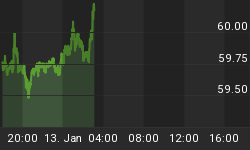The other shoe to drop? The next big move? Up or down?
Gold’s reign as the “next big thing” ended seven years ago. Too many people don’t want to admit that, but its true. Those who are ‘bullish’ on gold cannot let go.
Their behavior is typical of those who have missed the boat. And they don’t want to admit it, or believe it. And their problem is compounded by the fact that they originally viewed gold as a quality investment. Now they continue to point out all of the fundamental reasons gold should go much higher. We are told it is undervalued, unappreciated, unloved. And, of course, the price is manipulated, too.
Those things may provide a bit of consolation, but they don’t mask the pain of losing big bucks. And the interminable wait drags on.
We could say it was simply a matter of (poor) timing. However, most people who have a basic understanding of investment fundamentals would argue otherwise.
And they would be right. In the long-term, time works in our favor – not against us. An investment with good fundamentals – over time – becomes more valuable, not less valuable. And that relentless march upwards helps protect us against our own timing errors.
We don’t have to be perfect market-timers to be successful investors.
And it isn’t that gold’s price can’t go a lot higher, either. It can. And it probably will. And it has done so in the past.
After peaking at $850.00 per ounce in January 1980, the price of gold dropped as low as $250.00 per ounce twenty years later and then soared to $1900.oo per ounce in August 2011. But will you (or can you) wait thirty-one years to be vindicated?
There is a better explanation.
At the heart of disappointment regarding gold’s price action is the specter of unrealistic expectations:
“believing that rational individuals would sooner or later realize the trend and take it into account in forming their (opinions)”
But there is more to it. Much more. And it involves fundamentals. And an understanding of price versus value.
To wit, gold has only one basic fundamental: it is real money.
To further clarify, this means that gold is not an investment.
Do people view gold as an investment? Absolutely. Which is why they are continually surprised and confused at their investment results. They buy gold because they expect the price to go up; and logically so.
The problem is that the premise is wrong. When someone invests in gold, they are expecting the price to go up as a result of certain factors which they believe are “drivers of gold”. In other words, they believe that gold responds to certain factors. These factors may include interest rates, social unrest, political instability, government policies/actions, a weak economy, jewelry demand, and various ratios comparing gold to any number of other things.
But, again, that assumes that gold is an investment which is affected by the various things listed. It is not.
And when gold is characterized as an investment, the incorrect assumption leads to unexpected results regardless of the logic. If the basic premise is incorrect, even the best, most technically perfect logic will not lead to results that are consistent.
The price versus value issue is rooted in gold’s fundamental role as real money.
Gold is real money because it meets the qualifications of money. It is a medium of exchange, a measure of value, and a store of value.
The U.S. dollar is a substitute for real money. It is a medium of exchange and a measure of value. But it is not real money because it is not a store of value.
The U.S. dollar, in its role as ‘official’ money, has lost more than ninety-eight percent of its value over the past century.
The price of gold, on the other hand, has increased more than sixty times from $20.67 per ounce to in excess of $1300.00 per ounce.
Gold’s price increase does not mean that it increased in value by sixty-fold. Its price increase is a direct reflection of the ninety-eight percent decline of the U.S. dollar.
Gold is worth somewhere between $1000.00 per ounce and $2000.00 per ounce. This price range correlates to a decline in the U.S. dollar’s value of somewhere between ninety-eight and ninety-nine percent.
At $1300.00 per ounce, gold’s price reflects a decline of 98.3 percent in the value of the U.S. dollar since the inception of the U.S. Federal Reserve Bank in 1913.
Let’s recap.
Gold is real money. It is a store of value. The U.S. dollar (and all paper currencies) are substitutes for real money/original money; i.e., gold.
Gold’s characterization – incorrectly – as an investment (which it is not) leads to unrealistic expectations and unexpected results.
Gold’s value is in its role as real money. Its changing price (ever higher over time) is a direct reflection of changes in the value (ever lower over time) of the U.S. dollar.
As far as gold is concerned, nothing else matters.
By Kelsey Williams
















